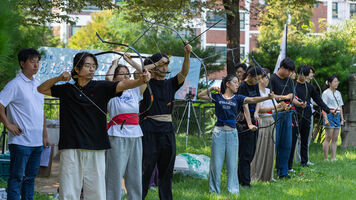Archery history: The legend of Robin Hood
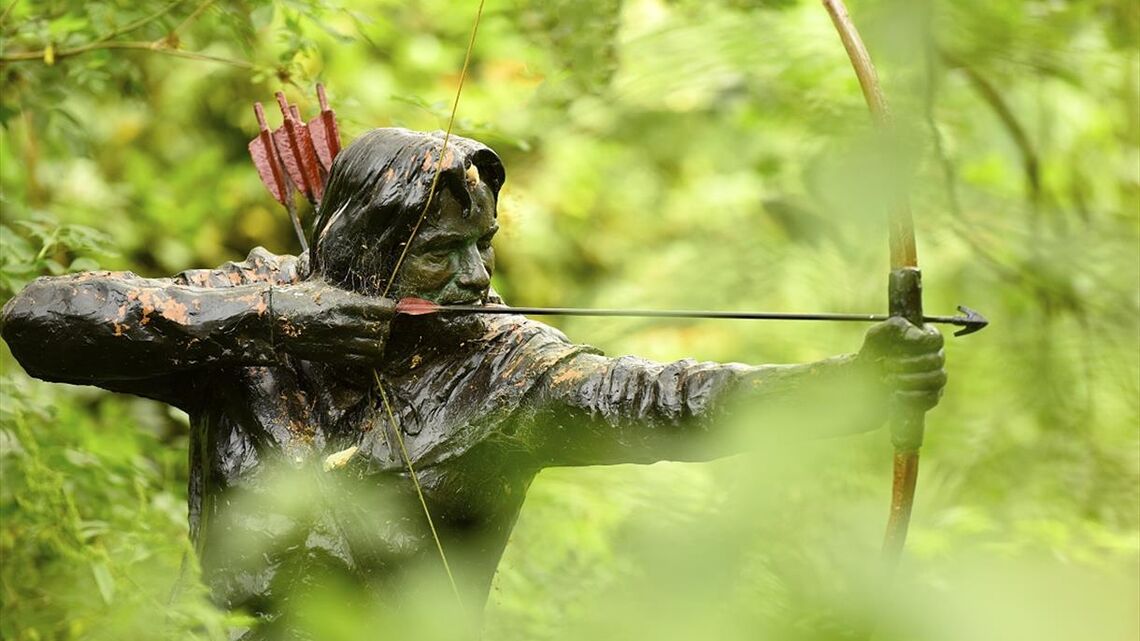
There have been many famous archers throughout history, but the most well-known of all is the hardest to pin down. His name might be known across the world but he is an exceptionally slippery figure.
The Robin Hood we know – from folklore, books, movies and more – is invariably dressed in ‘Lincoln green’, is highly skilled with a sword and a longbow, spends his time with a band of colourful characters in Sherwood Forest, and battles with the Sheriff of Nottingham and other oppressors.
His origin is different in each story but in most his activities are consistent. He steals from the rich and gives to the poor and stands up for the common man.
Archery has been a part of the legend from the start, coinciding – at least in many accounts – with the longbow’s military heyday in the Hundred Years’ War.
The traditional tales place archery in the world of tournaments and sport rather than hunting. Archery is also used as a plot device as a means to show skill and cunning, in an era when bows were seen as weapons of the people rather than the gentry.
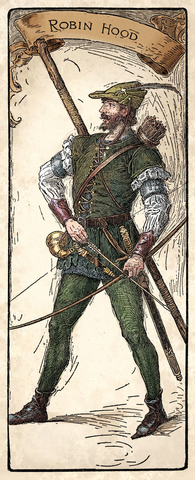
Archery becomes an equaliser, a tool for justice. Throughout history, the skilled archer has been a symbol of individual power. The Robin Hood legend gives that symbolism a social context.
Robin Hood is one of the few heroes from the Middle Ages who is still alive today. He walks the line between a common thief and outlaw – and a noble, virtuous and moral embodiment of good. He encompasses a many-sided resistance to authority that has appealed across centuries.
In the words of scholar Stephen Knight, he is a man who represents a ‘higher form of law, a thief who only steals from those who do not possess so much’. And, in modern times, the name ‘Robin Hood’ has become descriptive shorthand for everything from taxation schemes to charitable enterprises.
In contemporary archery, a ‘Robin Hood’ is, of course, when an archer splits an arrow already in the target with another arrow shot from the same spot, a rare feat named after the legendary figure for his skill.
But trying to find the ‘real’ Robin Hood is a little more difficult.
An oral tradition
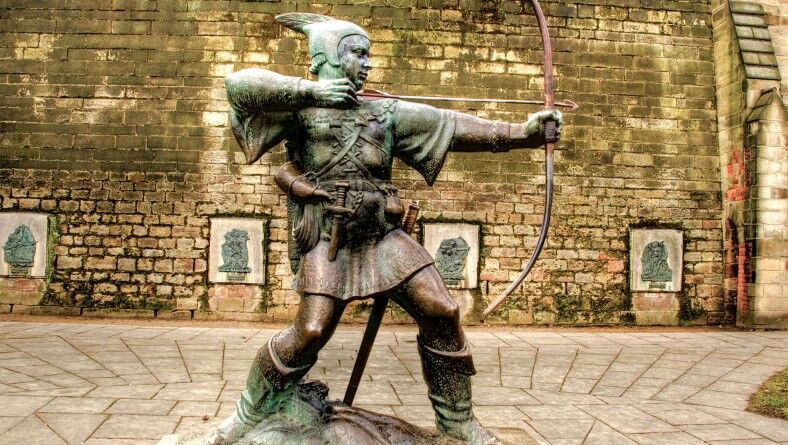
There is no authoritative source on the history of Robin Hood.
The stories we all know ultimately come from songs called ballads, a popular form of entertainment for at least 1000 years. These narrative tales constitute a form of popular history, and evidence suggests most were based on at least some kind of historic truth.
The earliest primary sources for the Robin Hood legend live on three tattered manuscripts dating from around 1500, now in the archives of the University of Cambridge, although it is clear they refer to events much earlier.
These versions don’t contain some of the better-known elements of the story, such as his love interest, Maid Marian, and companion, Friar Tuck, who don’t appear for another 100 years or so. But they describe events dated to the 1300s, in the reign of King Edward II, and detail the activities of an outlaw group moving from Barnsdale in Yorkshire to Nottingham, apparently accompanied by a young and gifted poet.
This earliest Robin Hood is more of a cutthroat character. One tale has him cutting off the head of his enemy Guy of Gisborne and sticking it on his bow.
Just as with fictional tales today, elements were exaggerated and romanticised, and they became part of celebrations. In the May Day festivities still practised in rural Britain, Robin Hood became a character akin to Santa Claus at Christmas, presiding over the party while representing rebellion and the forest, part of plays and other entertainment – and archery matches.
Further texts and plays in the following centuries cemented the legend and added King John and Richard the Lionheart into the mix, nailing Robin Hood’s legend to real events and times and developing the theme of the ‘people’s hero’.
King Henry VIII is known to have dressed up as Robin, with courtiers as the Merry Men, for a lark in 1510. At the end of that century, Shakespeare referred to Robin Hood and his tale in at least four of his plays. It didn't stop there. Indeed, much of what we think of Robin in the modern era – the kind, patriotic, romantic hero – is owed to Sir Walter Scott’s 1819 novel Ivanhoe.
It was even Scott who came up with the splitting of the arrow.
Did Robin Hood exist?
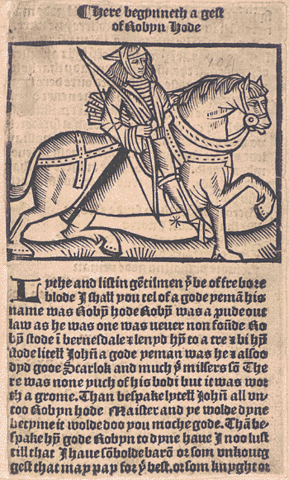
Over the centuries, many scholars and antiquarians have tried to link the events narrated in the ballads to real recorded events – a process that has often involved a little imagination.
Tantalising hints of historical evidence are everywhere: Robert, and its diminutive Robin, was a common name in medieval England. A member of a criminal gang was recorded as Willemus Robehod as early as 1262. A ‘Robyn Hode’ was found working as a royal servant in 1328. A ‘Robyn Hood’ was found, excitingly, in the names of a list of archers sent to protect the Isle of Wight in 1338, and a scholar called Joseph Hunter found more evidence for a ne’er-do-well called Robert Hood later in the 14th century.
One century later, a ship in Aberdeen was named the Robin Hood, which suggests that the ‘man’ already had some importance.
Indeed, the names ‘Robinhood’ and ‘Robehod’ and similar appear in criminal records of the era in regions across England, and some scholars have suggested that it was a generic name for a rogue or some kind of alias, perhaps based on a real person – or perhaps not.
Some theories place him close to royalty or even place him as an earl, but most mark him as a commoner. He has been placed all over Yorkshire and the north of England, as well as Nottingham and Sherwood Forest – and even in Scotland.
Indeed, even in the earliest texts, Robin seems to represent multiple characters.
There is a deep human need, especially in the modern era, to unmask the ‘real’ Robin Hood and to solve the mystery of his identity. The myth is so potent and long-lasting. The idea of Robin Hood looms so large in our imagination that we convince ourselves that there must have been someone ‘real’ behind it.
But there may have been many ‘Robin Hoods’. Perhaps the compilers of the ballads took the story of the career of a real outlaw, gave him a fictitious, daring name, and embroidered his story in a series of episodes lifted from local villains and other colourful characters.
It is possible that ‘Robin Hood’ is ultimately a more widely dispersed idea of resistance to authority, which realised in several forms over many centuries, and eventually proved its worth as an irresistible, if very flexible, story.
Knight, the author of several of the classic books on the subject, describes the ‘real’ Hood as ‘a forcefield of variations’.
The legend retold
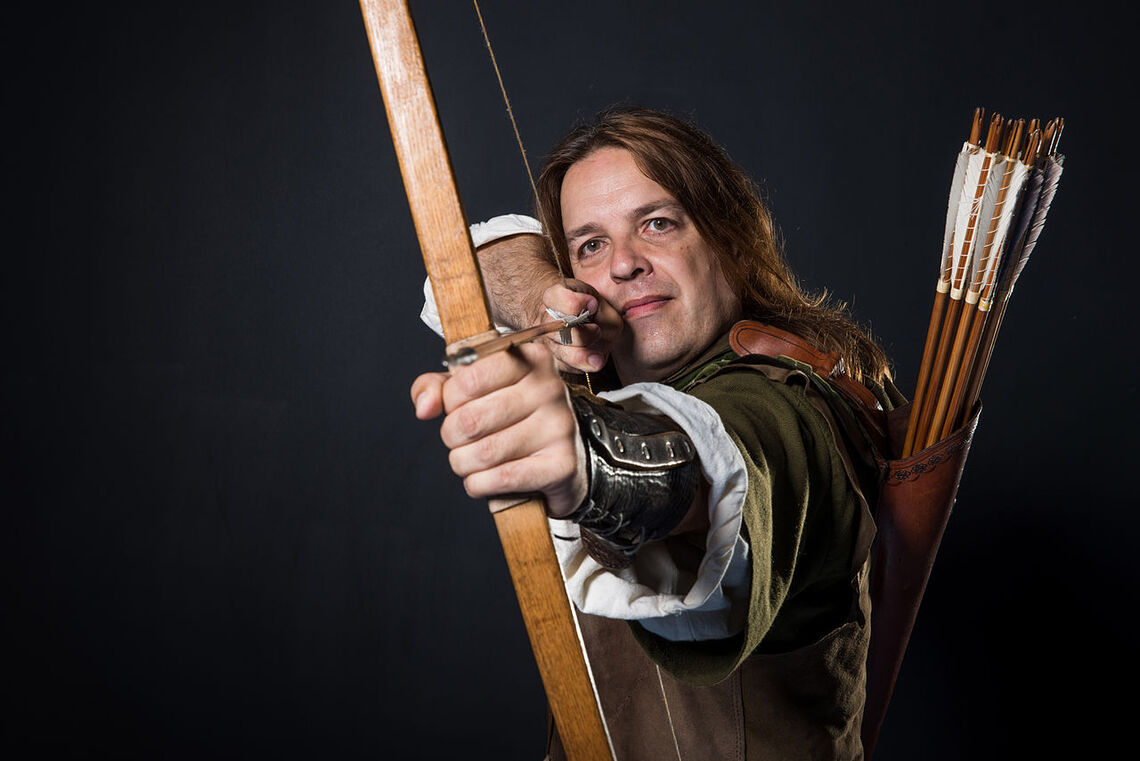
Looking for the real Robin Hood might be a lost cause, although it hasn’t stopped countless people from trying – and for centuries. But the tradition is perhaps even more interesting.
Notably, Robin is a popular, rather than a literary hero. The outlaw gang is a tale that seemingly never gets old, retold across the world in numerous variations right up until the present day. The lives of rogues and villains have always been popular, and the first prose account of his life appeared in 1678, followed by many more.
Unlike some of the other medieval legends such as King Arthur, which contains adultery, the less-complex Robin Hood has cruised through centuries of varying religious and social standards.
As a leader of the oppressed or the underdogs, he has been cast as a kind of pagan god, a student leader, a violent outlaw, a crusader, a stiff-upper-lip British officer, a nostalgic reminiscence of a national hero, a folk magician, a Saxon freedom fighter, a church reformer and many more.
The story has been endlessly retold across novels, plays, songs, operas, comics and – since 1983 – in over two dozen video games. In the 20th century, Hollywood fell upon Robin Hood’s endless adaptability. At a rough count, there have been over 80 films and small-screen adaptations of the legend over the last century… and that’s just the ones in English.
From 1908’s silent film Robin Hood and His Merry Men onwards, through Robin Hood: Prince of Thieves, starring Kevin Costner, and more recent takes starring Russell Crowe and then Taron Egerton, he has rarely left the screen for long.
Even the television series Arrow, which ran for eight seasons and 170 episodes until 2020, which is based on the DC Comics character Green Arrow, is essentially a retelling of the Robin Hood myth.
With the current focus on environmental matters, some have even fashioned Robin Hood into the world’s first ecologist and protector of the forest.
Whichever flavour you prefer, Robin Hood and his friends don’t change much. The tale is of a hero, rather than a hero’s journey, and its essential simplicity and adaptability are the key to his longevity. Whether he existed or not, his story, leading a band of outlaws outside society with a longbow in his hand, will likely persist forever.









